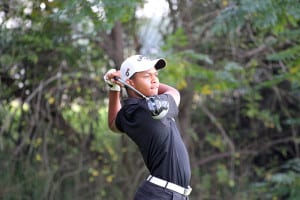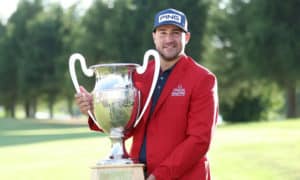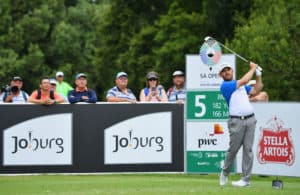Lee Trevino famously reckoned that, ‘If you are caught on a golf course during a storm and are afraid of lightning, hold up a 1-iron … not even God can hit a 1-iron.’
It’s true that a 1-iron, which now belongs to a bygone era, was a beast of a club to hit, let alone master. Yet, we are reminded of the genius of a teenage Ernie Els. At the age of 14, already playing off scratch, he beat Phil Mickelson, who was eight months older than him, at the Junior World Golf Championship final in San Diego.
The world was put on high alert. For Mickelson was the next big thing in the US, someone to follow the generations of greats who had preceded him.
In his bag Els carried a 1-iron and a 2-iron, and he hit them miles, straight and true, all travelling like a bullet out of a barrel.
Trevino’s ‘God’ analogy had a parallel. In 1994, the two-time Major champion Curtis Strange partnered Els at the US Open at Oakmont and commented, ‘I think I’ve just played with the next god of golf. How can somebody hit it that far and putt? He could be great.’
Renowned swing instructor David Leadbetter observed of the then 24-year-old: ‘You’re looking at the wave of the future with Ernie. Here’s a guy, 6ft 4, more than 200 pounds, strong as an ox, with control of what he’s doing. He hits it a very long way with comparatively little effort.’
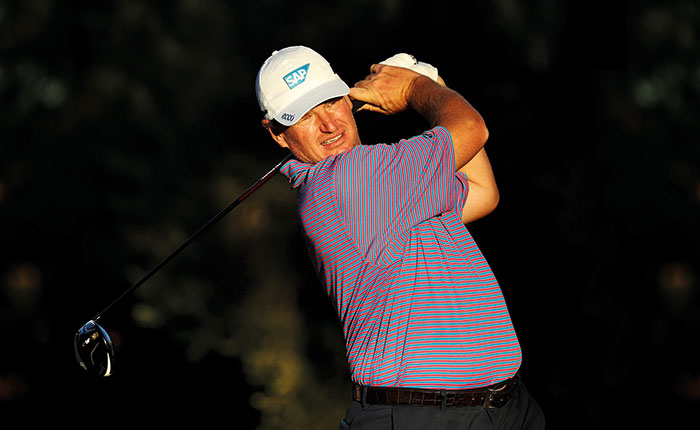
Of course, Els had been cleaning up on the amateur circuit and he finally decided to turn professional in 1989, after representing his country at the 1988 British Amateur Championship at Royal Porthcawl in Wales. But perhaps the decision was hastened after he finished fourth behind American Fred Wadsworth at the 1989 SA Open at Glendower.
That year Els was allowed to win a maximum of R400 in prize money and his share was ‘donated’ to those other professionals around him on the final scoreboard.
‘Ja, I was a 19-year-old doing my national service,’ he recalls. ‘That week Errol van Zyl caddied for me and he’s a buddy to this day. We had a lot of fun at Zwartkop Air Force base. The week after that 1989 SA Open, we went to Phalaborwa and had another top 10.’
What stung the young Els more than having to give away his prize money to pros was that he wasn’t able to win the SA Open as an amateur. That’s how lofty his ambitions were.
Els was an instant success as a professional and this January he returns to Glendower, the scene of his breakthrough as an amateur among the pros, when he is host and ambassador of the 2017 SA Open. Els has won the tournament five times, the first being in 1992 and the most recent in 2010. He’s won 71 tournaments around the world, including four Majors – although he has been runner-up at three others over the years – and built himself a financial empire.‘It has come full circle. I was an Afrikaans laaitie who couldn’t speak English properly and now I’m 47 and going back to a sentimental venue where I broke through at 19. I was very green back then. The SA Open is steeped in history and tradition, and one of the oldest nationals in the world [many reckon it is second only to The Open Championship].
‘I’ve won the SA Open five times, and legends like Bobby Locke and Gary Player have won it nine and 13 times respectively. So it’s mind-boggling to think I am now in the position to be ambassador and host. I take great pride in that, as well as the fact it’s at Glendower and at a time in South Africa when the landscape is so different to what it was in 1989.’
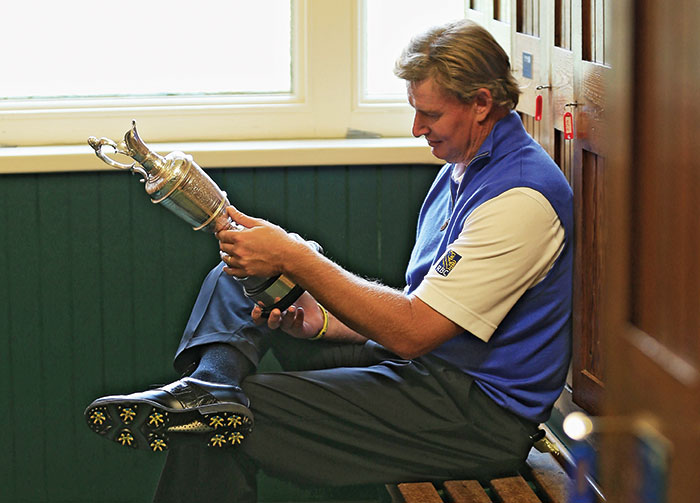
Els also played with a 1-iron in his bag back then and struck it as though he was making the ball talk with it. ‘I actually used Gary Player’s Avenger clubs at the time,’ he recalls.
Things moved quickly. He picked up his first SA Open title in 1992, at Houghton Golf Club, and claimed the first of his four Majors in 1994. At the time Els admitted, ‘I won a lot of cash and that was nice. But the main thing I think of is winning golf tournaments. Winning big money is great, but we all play to win the tournaments. That’s the bottom line.’
Els is regarded as unlucky to have had to play in the same era as Tiger Woods, who picked up 14 Majors between 1997 and 2008, but ironically it wasn’t Woods who denied him three Majors. At the 2000 Masters, Vijay Singh beat the South African by three shots and at Augusta in 2004, Els finished one stroke behind the left-handed American Mickelson.
At the 2004 Open Championship, the unheralded Todd Hamilton beat Els in a playoff. ‘South Africans sometimes don’t appreciate how good Ernie is and was,’ says his friend and business manager at Els for Autism, former professional Nico van Rensburg. ‘He could easily have won eight or nine Majors.’
Apart from those big ones that slipped through his fingers, in 1995, Els held a three-shot lead after 54 holes at The PGA Championship, before a final-round 72 saw him drop to third behind winner Steve Elkington.
He also finished third, behind Woods, at the 2007 PGA Championship and was runner-up to Woods – albeit by 15 strokes! – at the 2000 US Open at Pebble Beach.
For a man whose game was driven by the desire to win, Els’ priorities in life have changed in the past decade, and understandably so. Married to Liezl in 1998, the couple have two children, Samantha and Ben, but it was the discovery that Ben was autistic that brought home to the couple that there is nothing as precious as family life.
The parents had known Ben had autism for ‘quite a few years’ before announcing it to the world in 2008, when Ernie added an ‘Autism Speaks’ logo to his golf bag at a tour event. Ben was only five at that stage.
‘I feel comfortable talking about it now,’ he said at the time. ‘I’ve got a bit of a profile where it will grab attention. That’s what this problem needs. And with that, hopefully, more people will get involved and we can start getting to what causes it and what can be done to help it. Ben is quite affected by it, but he’s a lovely boy.’
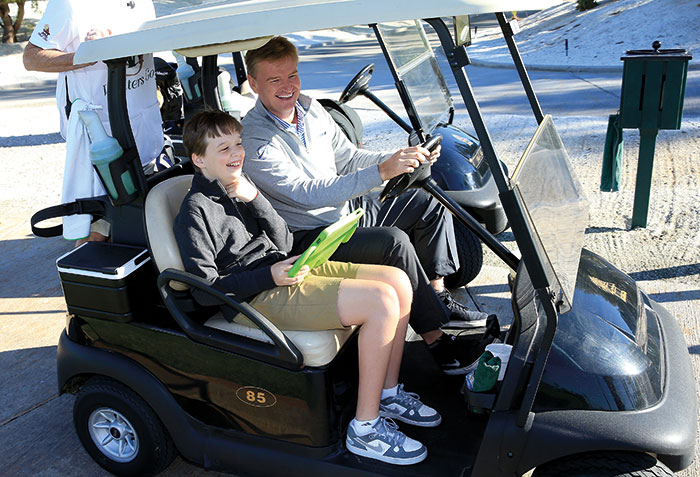
Together with Liezl and the Els for Autism Foundation, millions of dollars have been raised worldwide to increase awareness of the condition and to financially assist countless similarly suffering families who ordinarily wouldn’t have the means to get help.
And, more than his golf career and his businesses, which include his award-winning wine industry and the designing and building of signature golf courses, it’s his involvement in the fight against autism that will invariably be Els’ greatest legacy. At least, that’s the way one hopes it pans out.
Els was a fine tennis and rugby player in his youth – not to mention being pretty useful with a cricket bat – and Ben was always the boy who would follow in Dad’s footsteps and become a top sportsman. ‘That’s the way most South African dads think,’ he says. ‘When you have a daughter, it’s great; but when a son comes around, he’s always the one you think is going to get to play for the Springboks or the Proteas, or represent his country. Ben will not be doing any of that. Not even for a Springbok team that is playing as kak as I’m playing golf.
‘These days, though, Ben is my best friend. After a perfectly balanced daughter, Ben came round and it rocked our world. It affected the whole household, but I’m lucky Liezl and I stayed together …’
It’s true that love hurts. However, the flip side is that Els’ commitment to creating more awareness around autism has also led to many doors in the world of business opening to him. One of those just happened to Donald Trump’s, in March 2013, when the pair met at the WGC-Cadillac Championship at Trump Doral and the South African spoke to him about his vision for his autism project. Trump was suitably impressed: ‘I have always been a huge fan of Ernie, not just for his magnificent swing and his achievements in professional golf, but also for his philanthropy off the course. I’m referring particularly to the awareness and fundraising Ernie and his foundation do for autism.
‘I was honoured that Ernie asked me to become involved in the Els for Autism Golf Challenge. It’s an exciting and unique annual series that raises funds for a terrific cause. We are proud to have Trump courses hosting Golf Challenge events.’
Els reckons that Trump is ‘just a regular guy, like you and me, who speak our minds. Golf is his hobby and we get along quite well. I don’t get to see him that much these days – he’s become a pretty busy guy – but he’s a larger-than-life character. He loves the game of golf and he’s spent a lot of money on his hobby.
‘There is always a lot of banter between us and he gives me a bit of grief, but at the end of the day he’s a guy who loves golf who happens to be the president of the United States. He’s not your archetypal politician.
‘I know Donald is a big fan of South Africa and his son Eric holidays in the country quite often. I know Eric quite well. I’m busy with a resort in Indonesia where I’m designing the golf course and the Trumps are involved with the resort. I’ve met the whole family, they’re nice and Donald is a nice man.’
Their relationship suggests that Els will soon be walking around the White House and offering some tips on the putting green that takes up a large part of the South Lawn.
Outgoing president Barack Obama racked up more than 300 rounds of golf during his two terms in office and Trump will continue the trend of active US golfing presidents. Els will have to make space in his diary to play a round with the leader of the free world. ‘I haven’t played one up to now, but who knows,’ Els laughs.
‘But I have been to the White House before and met with President Obama after The Presidents Cup; we met with him and Vice-President Joe Biden. The president talked at length about autism and he told Liezl and me that we are on the right track. Trump’s involvement has been financial. When we included his courses on our Golf Challenge schedule he didn’t charge us a cent, which was a great gesture.’
Not that Trump will ever be able to take the place in his heart that Els reserves for his favourite politician.
‘I met Nelson Mandela for the first time in 1994 with Johann Rupert when we had a dinner together, and then after that we stayed in touch.
‘I used to play regularly at Houghton Golf Club and his home was nearby. He came over one time and we exchanged gifts with each other. That was kind of a press function but I have still got the picture from that day in 1996 in my office in the US, when he presented me with a sketch and asked me to sign an autograph for him.
‘And then every time I won a tournament he would call me. I remember flying to London once. We were sitting up front and Mr Mandela came on to the plane last.
‘He was sitting in the front seat and he saw me and my daughter sitting next to me. All of a sudden he didn’t really want to see me any more – he wanted to talk to my daughter. He got Samantha to go up there and she sat on his lap and he spoke to her like she was his grandchild. They were special times and the little time we had together was very special. He was the most amazing person I have ever met.’
History will also be kind to Els. He might just go down as one of the finest and most benevolent South African sportsmen ever.



